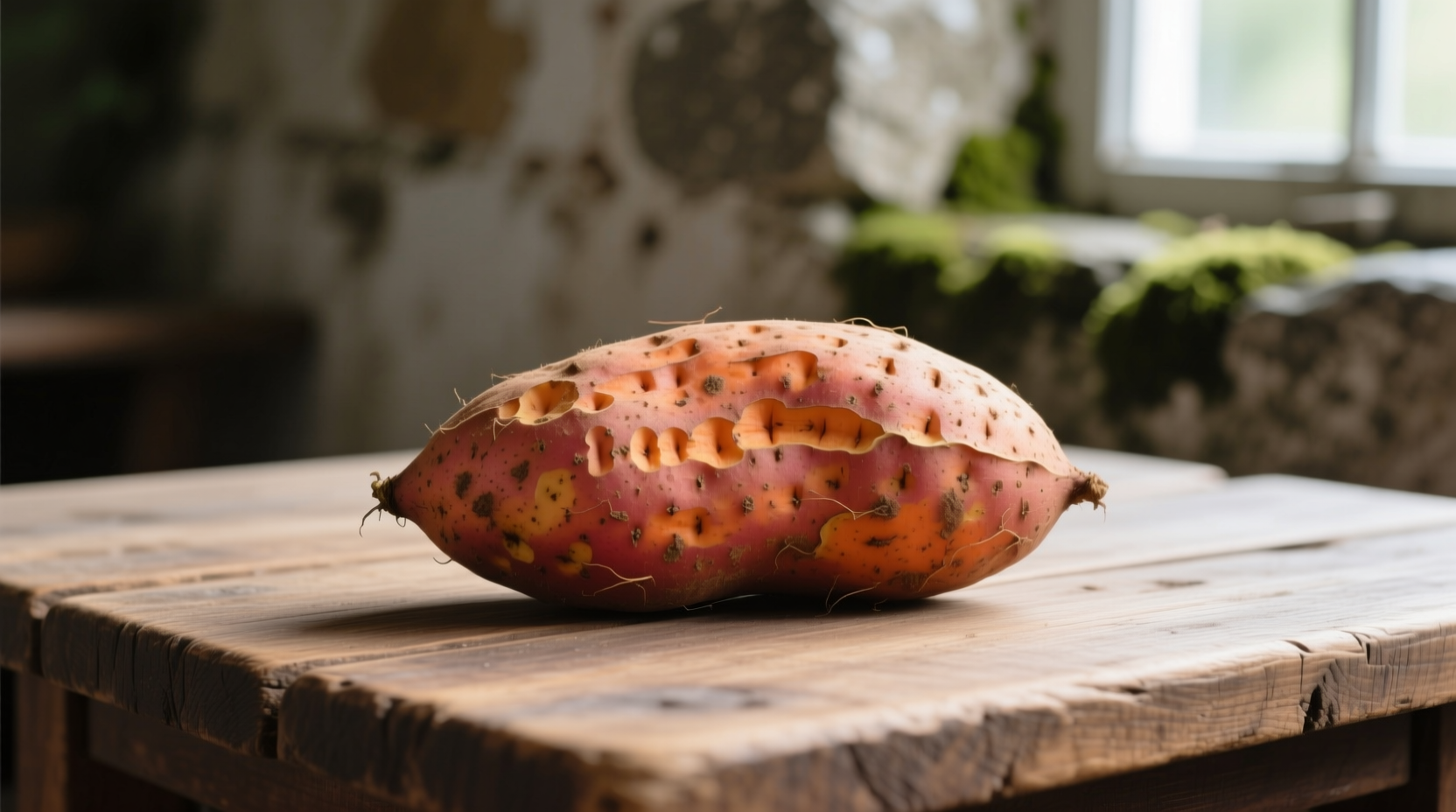No, you should not use aluminum foil when cooking sweet potatoes. The acidic compounds in sweet potatoes can react with aluminum foil at high temperatures, potentially causing aluminum to leach into your food and affecting both taste and safety. Baking sweet potatoes directly on the oven rack or using parchment paper are safer, more effective alternatives that preserve flavor and texture.
Why Aluminum Foil and Sweet Potatoes Don't Mix
When you wrap sweet potatoes in aluminum foil before baking, you're setting up a chemical reaction that can compromise both your meal's quality and safety. Sweet potatoes contain natural acids that interact with aluminum when heated, causing the metal to leach into your food. This isn't just a theoretical concern—research from the U.S. Food and Drug Administration confirms that acidic foods can increase aluminum migration from packaging materials.

The Science Behind the Reaction
Sweet potatoes have a pH between 4.5-5.5, placing them in the mildly acidic range. When these naturally occurring acids meet aluminum foil at baking temperatures (typically 375-425°F), a process called electrochemical corrosion occurs. This reaction:
- Transfers small amounts of aluminum into your sweet potato
- Creates dark spots or discoloration on the potato skin
- Can impart a metallic taste to your food
- Weakens the foil, potentially causing tears during cooking
| Cooking Method | Aluminum Transfer | Texture Result | Flavor Impact |
|---|---|---|---|
| Aluminum foil wrap | High (0.5-2mg per potato) | Soggy skin, uneven cooking | Metallic aftertaste possible |
| Parchment paper | Negligible | Moist interior, slightly crisp skin | Pure sweet potato flavor |
| Direct oven rack | None | Crisp skin, caramelized exterior | Enhanced natural sweetness |
| Cast iron skillet | None | Charred edges, creamy interior | Smoky complexity |
Health Considerations You Should Know
While occasional exposure to small amounts of aluminum from cooking isn't likely to cause immediate harm, the World Health Organization recommends minimizing unnecessary aluminum exposure. Regular consumption of aluminum through food can contribute to your total body burden, which some studies suggest may have long-term health implications. The European Food Safety Authority has established a tolerable weekly intake of 1mg of aluminum per kilogram of body weight.
Superior Cooking Methods That Preserve Flavor
When you skip the foil, you unlock better texture and more authentic flavor in your sweet potatoes. Here's why direct cooking methods outperform foil wrapping:
The Direct Oven Rack Method
Placing sweet potatoes directly on your oven rack allows heat to circulate evenly around the entire surface. This creates:
- Natural caramelization of sugars on the skin
- Even cooking without soggy spots
- Concentrated, richer flavor throughout
- Perfectly tender interior with slightly crisp skin
Parchment Paper Alternative
If you're concerned about potential mess, parchment paper provides a safe barrier that won't react with the sweet potato's acids. Unlike foil, parchment:
- Withstands temperatures up to 450°F without breaking down
- Allows moisture to escape, preventing sogginess
- Creates a gentle steaming effect while protecting your baking sheet
- Is completely non-reactive with acidic foods
Practical Tips for Perfect Sweet Potatoes Every Time
Follow these professional techniques to maximize flavor and texture when cooking sweet potatoes without foil:
Preparation Matters
Before baking, always:
- Wash and thoroughly dry sweet potatoes (moisture helps create steam for even cooking)
- Poke 4-6 holes with a fork to allow steam to escape
- Leave skin intact (it contains valuable nutrients and prevents drying)
- Size-match potatoes if cooking multiple (ensures even cooking)
Temperature and Timing Guide
| Sweet Potato Size | Oven Temperature | Direct Rack Time | Parchment Method Time |
|---|---|---|---|
| Small (4-6 oz) | 400°F | 40-45 minutes | 45-50 minutes |
| Medium (6-8 oz) | 400°F | 50-55 minutes | 55-60 minutes |
| Large (8-10+ oz) | 400°F | 60-65 minutes | 65-70 minutes |
Doneness Test
Don't rely solely on timing. Your sweet potato is perfectly cooked when:
- A fork inserts with no resistance in the thickest part
- The skin appears slightly shrunken with small sugar bubbles
- The internal temperature reaches 205-212°F (use an instant-read thermometer)
- Squeezing gently yields slightly to pressure
When Foil Might Be Acceptable (Rare Exceptions)
While the "no foils allowed" rule applies to standard baking, there are limited circumstances where foil might be appropriate:
- Grilling protection: When grilling directly over flames, a loose foil wrap can prevent charring while still allowing some airflow
- Post-cooking storage: Wrapping cooked sweet potatoes in foil for short-term storage (under 2 hours) won't cause significant leaching
- Specialty recipes: Certain fusion recipes that specifically call for foil-wrapped cooking for texture contrast
Even in these cases, parchment paper or silicone baking mats remain safer alternatives for most home cooking applications.
Unlock Better Flavor Profiles Naturally
Without foil interfering with the cooking process, you'll notice significant improvements in your sweet potatoes' flavor development. The natural sugars caramelize more effectively, creating complex flavor compounds that enhance the sweet potato's inherent sweetness without added sugars. Professional chefs at the Culinary Institute of America consistently teach students to avoid foil when roasting root vegetables for this very reason.
Make the Switch Today for Better Results
Next time you prepare sweet potatoes, skip the foil and try one of these superior methods. You'll enjoy better texture, purer flavor, and peace of mind knowing you're avoiding unnecessary aluminum exposure. The small adjustment in your cooking technique delivers noticeably superior results that highlight the natural deliciousness of this versatile vegetable.











 浙公网安备
33010002000092号
浙公网安备
33010002000092号 浙B2-20120091-4
浙B2-20120091-4